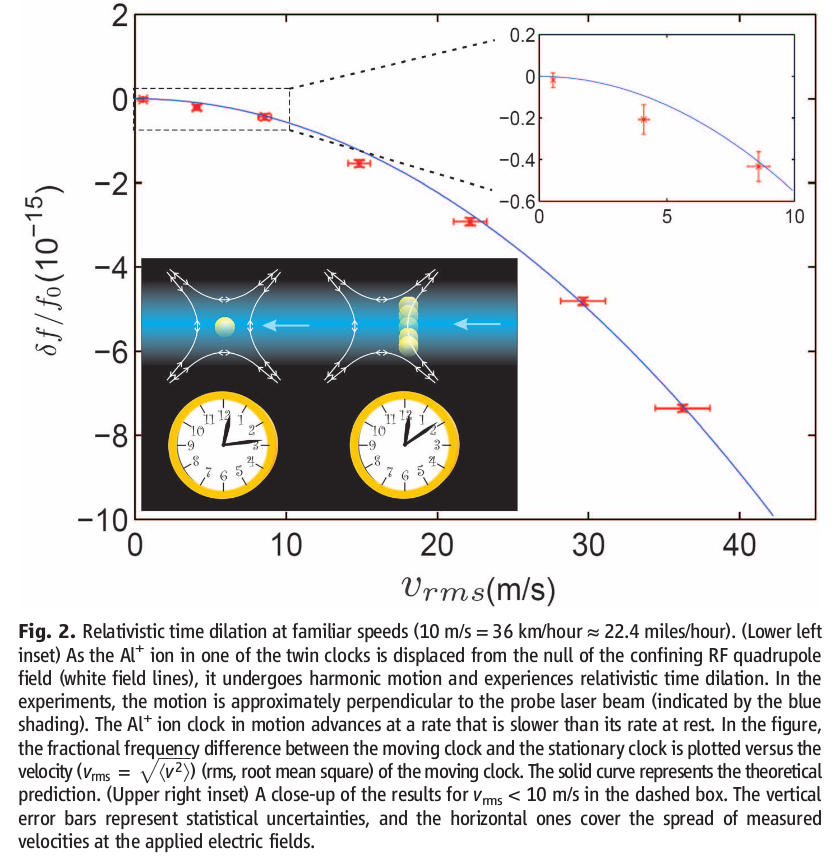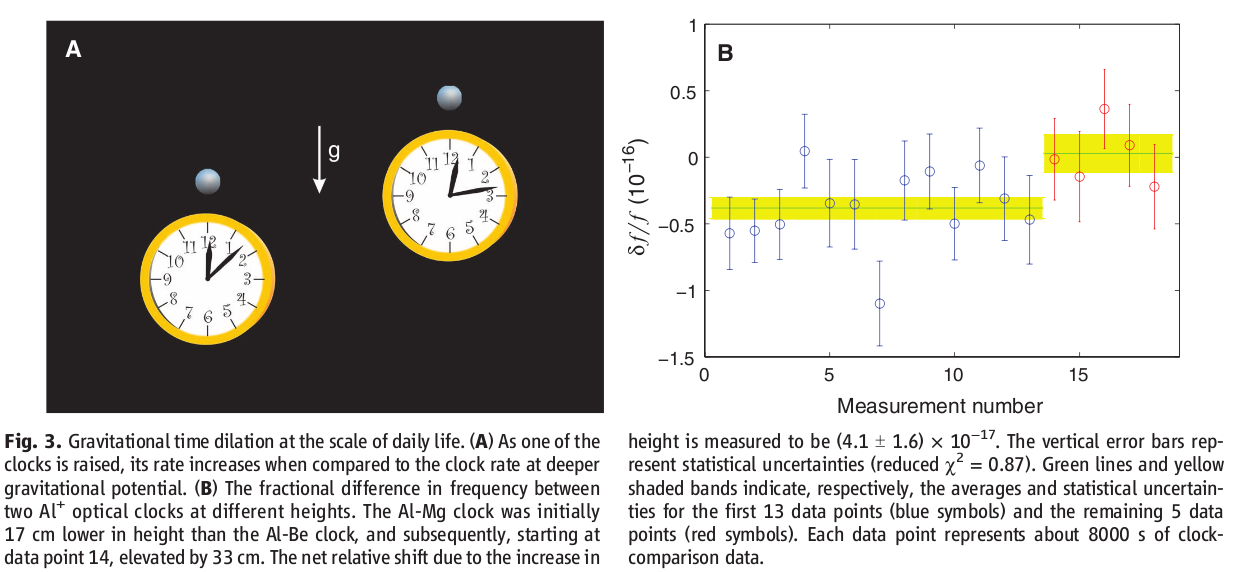
 Copyright © Michael Richmond.
This work is licensed under a Creative Commons License.
Copyright © Michael Richmond.
This work is licensed under a Creative Commons License.
Mr. Shechter brought this item to my attention. Researchers at the National Institute of Standards and Technology recently made very stringent tests of Special Relativity and its big brother, General Relativity, using extremely precise clocks.
Special Relativity predicts that if we synchronize two identical clocks, then leave clock A motionless while clock B moves, then an observer in clock A's frame should determine that clock B ticks at a slower rate. The test made by the scientists is a bit more complicated than the ideal case -- they used individual atoms as clocks, and they made one undergo oscillatory motion rather than uniform motion at a constant speed -- but the results are clear: the moving clock B does run more slowly.

The scientists made a second experiment to test one of the predictions of General Relativity: if two identical clocks are synchronized, and then clock A is placed in gravitational field (at rest on the floor on Earth), while clock B is placed in weaker gravitational field (at rest on a table, elevated above the floor, on Earth), then the clock in the weaker gravitational field should appear to run faster. In this case, the difference in height between the two clocks was only 17 cm! Nonetheless, the results are again clear.

 Copyright © Michael Richmond.
This work is licensed under a Creative Commons License.
Copyright © Michael Richmond.
This work is licensed under a Creative Commons License.